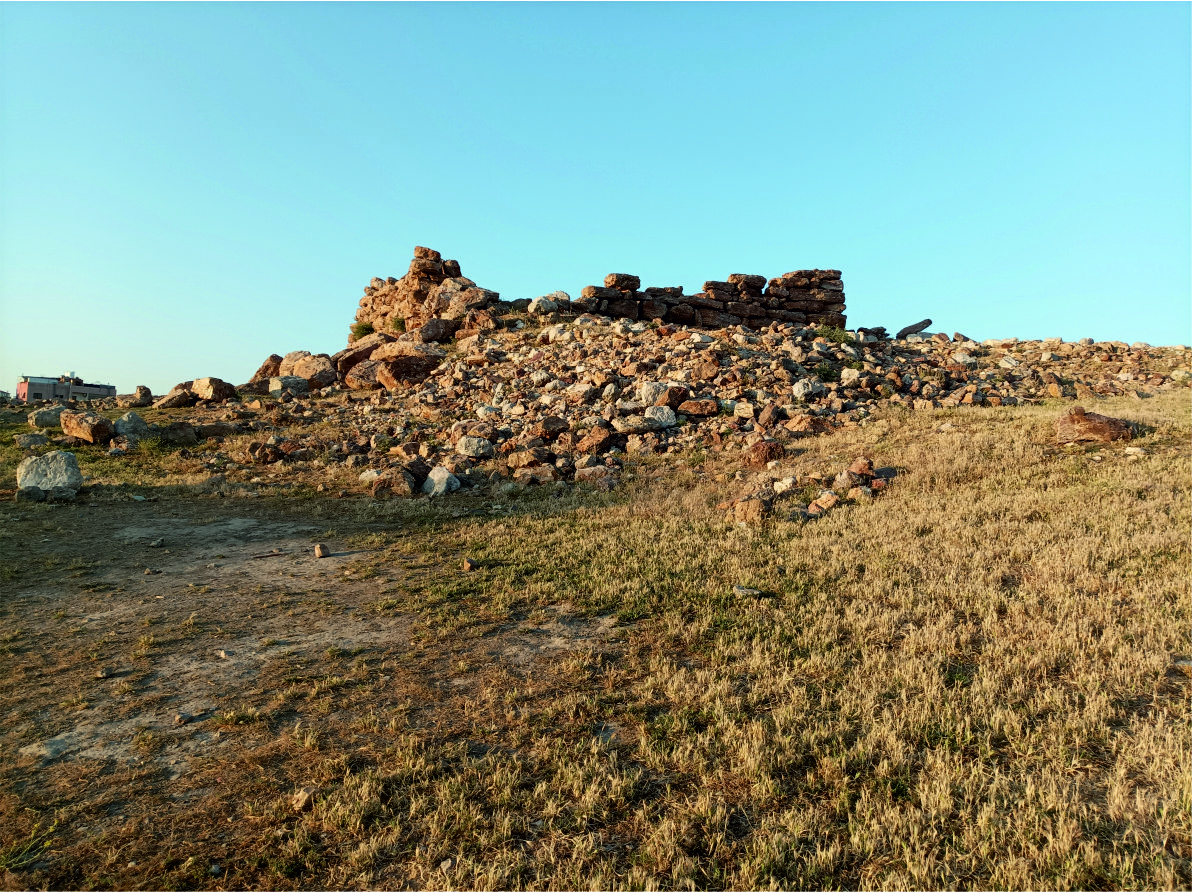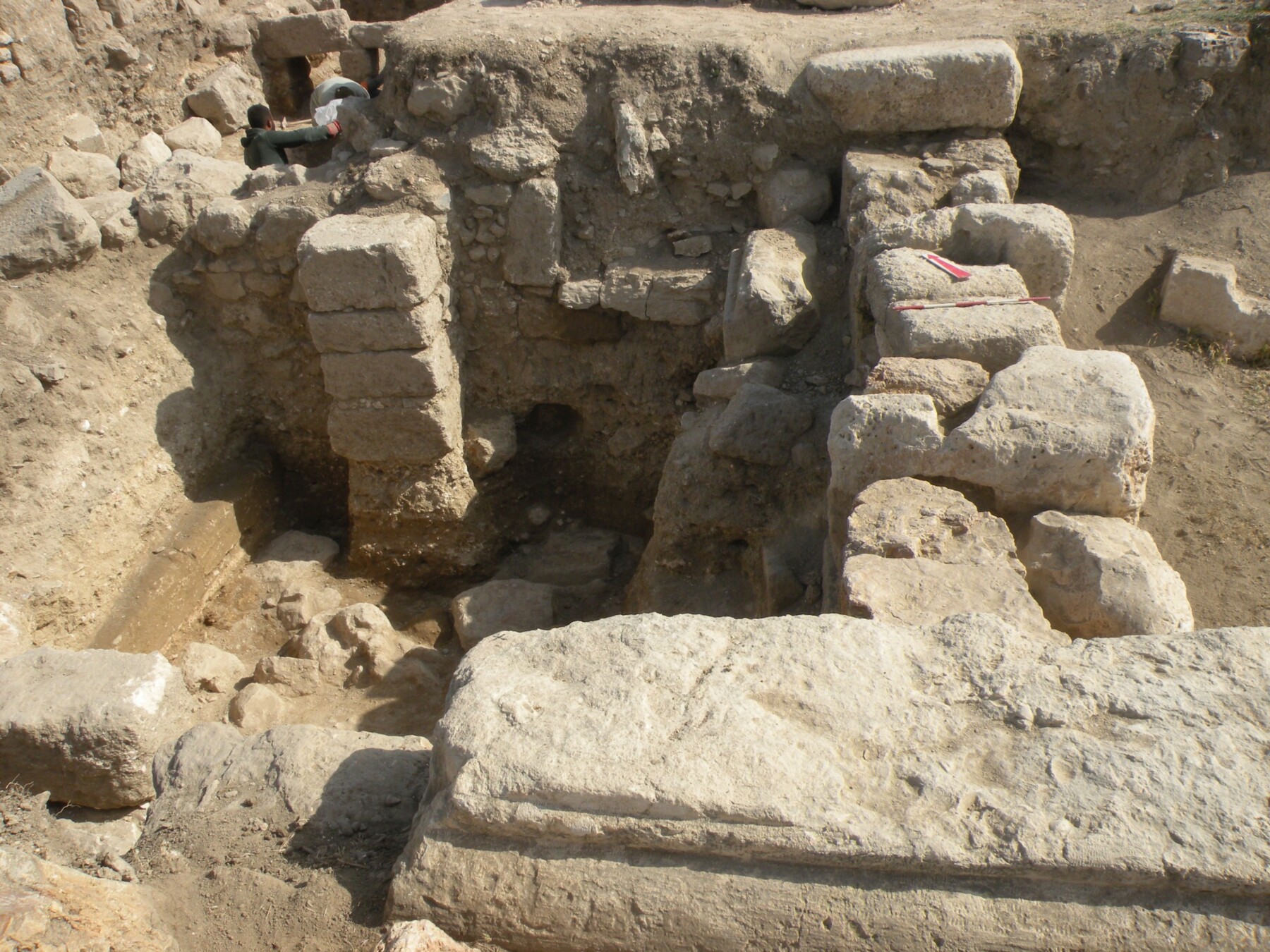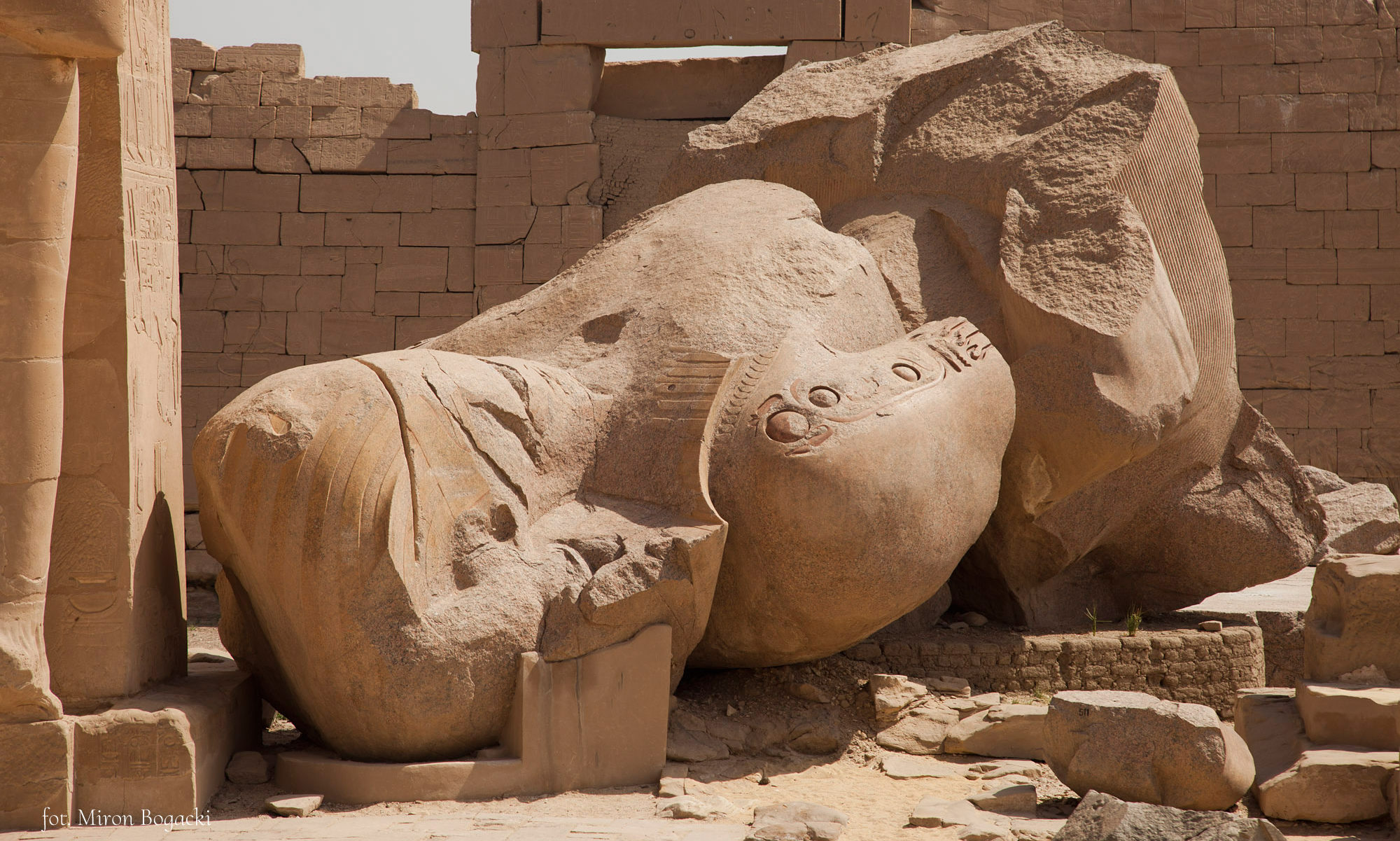
Person conducting excavation: Dr hab. Mariusz Burdajewicz and Prof. Jolanta Młynarczyk
Site name: Khirbat Sarah (west Amman), MEGA Jordan # 11304 (JADIS 2215017).
Country: the Hashemite Kingdom of Jordan.
Involved institutions: Faculty of Archaeology, University of Warsaw; Faculty of Conservation and Restoration of Works of Art, Academy of Fine Arts, Warsaw; Wrocław University of Science and Technology; Department of Antiquities, Jordan. In 2018-2019: Polish Centre of the Mediterranean Archaeology University of Warsaw.
Type of the site: settlement from the Iron Age, Hellenistic, Roman, Byzantine, and Islamic periods.

Description of the research:
In 2018 and 2019, a team directed by Prof. Jolanta Młynarczyk from the Polish Centre of Mediterranean Archaeology University of Warsaw conducted two short seasons of work at the ancient site of Khirbat Sarah, located on the western outskirts of Amman. A geophysical and archaeological survey proved the great cognitive potential of Khirbat Sarah as an exemplary site in terms of the longue durée, occupied from the Iron (Ammonite) age till the middle Islamic period at least.

After the break caused by the COVID-19 pandemic, excavations were resumed in 2023, this time on behalf of the Faculty of Archaeology, University of Warsaw. The current project aims to define the chronology and nature of the settlement in the different phases of its history, as well as to better understand its relationship with nearby Amman during the period of over two millennia. This spectacular site, occupying an excellent strategic position on the western edge of the Amman plateau, is crowned by a monumental architectural complex. It consists of an ‘Ammonite tower,’ secondarily used in the Roman period as a temple with an arcaded courtyard added to it. This complex, surrounded by buildings of later periods, still needs to be fully recognized. Finds, mainly pottery, indicate a particularly intensive settlement from the Ayyubid-Mamluk period. Likely, a rural settlement existed here, its inhabitants involved in agriculture and animal husbandry, which provided an agricultural base for the Islamic capital of Amman. On the other hand, the unique combination of an Iron Age Ammonite tower with a temple characterized by Classical architectural order is an interesting issue related to the local community’s adaptation of a Greco-Roman material culture and religion.
The site’s ancient name remains obscure. 19th-century travelers S. Merrill and C.R. Conder identified the site with biblical Azor (Iazer), still mentioned in the 4th century by Eusebius (Onomastikon). Indeed, the very geographical situation and some archaeological evidence for a Hellenistic period habitation might suggest the identity of Khirbat Sarah with the fortified settlement of Jazer, conquered by Judah Maccabee in 163 BC (I Macc. 5,8). Under the Ptolemies, in the 3rd century BC, the site must have been a part of the region administered by the mighty family of Tobiads, suggesting its possible identification with “Birta of the Ammanitis”, mentioned in a letter from the Zeno Archive, dated 259 BC.

Further reading:
Młynarczyk J. and Burdajewicz M., with appendices by R. Ryndziewicz and J. Burdajewicz: Archaeological and geophysical survey at the site of Khirbat as-Sar (Sara), Jordan, Polish Archaeology in the Mediterranean 27/1 (2018), 341-378 (with earlier bibliography relevant to Khirbat es-Sar).
Villeneuve, F., Khirbet Sara (Jordan) 1983. In: A. Łajtar and K. Jakubiak (eds.), Ex Oriente Lux. Studies in Honour of Jolanta Młynarczyk, Warsaw (2020), 309-322.
Funding statement: The project is financed by the Polish National Science Centre (UMO-2021/43/B/HS3/00813, Opus 22).

